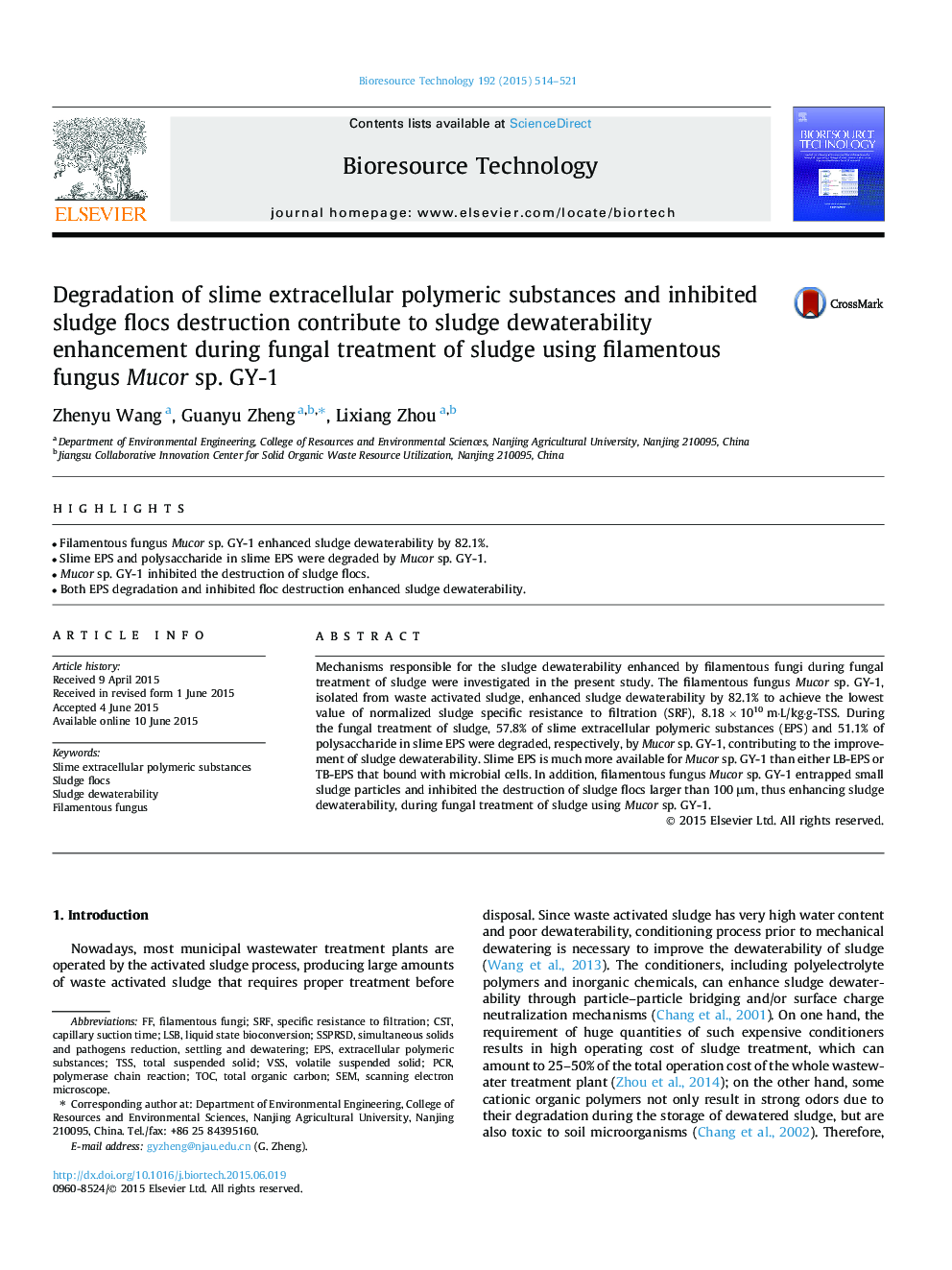| Article ID | Journal | Published Year | Pages | File Type |
|---|---|---|---|---|
| 7074277 | Bioresource Technology | 2015 | 8 Pages |
Abstract
Mechanisms responsible for the sludge dewaterability enhanced by filamentous fungi during fungal treatment of sludge were investigated in the present study. The filamentous fungus Mucor sp. GY-1, isolated from waste activated sludge, enhanced sludge dewaterability by 82.1% to achieve the lowest value of normalized sludge specific resistance to filtration (SRF), 8.18 Ã 1010 m·L/kg·g-TSS. During the fungal treatment of sludge, 57.8% of slime extracellular polymeric substances (EPS) and 51.1% of polysaccharide in slime EPS were degraded, respectively, by Mucor sp. GY-1, contributing to the improvement of sludge dewaterability. Slime EPS is much more available for Mucor sp. GY-1 than either LB-EPS or TB-EPS that bound with microbial cells. In addition, filamentous fungus Mucor sp. GY-1 entrapped small sludge particles and inhibited the destruction of sludge flocs larger than 100 μm, thus enhancing sludge dewaterability, during fungal treatment of sludge using Mucor sp. GY-1.
Keywords
SRFTSSTOCLSBEPSCStVSsSludge dewaterabilitycapillary suction timevolatile suspended solidFilamentous fungiFilamentous fungusSludge flocsSEMSpecific resistance to filtrationExtracellular polymeric substancesscanning electron microscopepolymerase chain reactionPCRTotal suspended solidTotal organic carbon
Related Topics
Physical Sciences and Engineering
Chemical Engineering
Process Chemistry and Technology
Authors
Zhenyu Wang, Guanyu Zheng, Lixiang Zhou,
